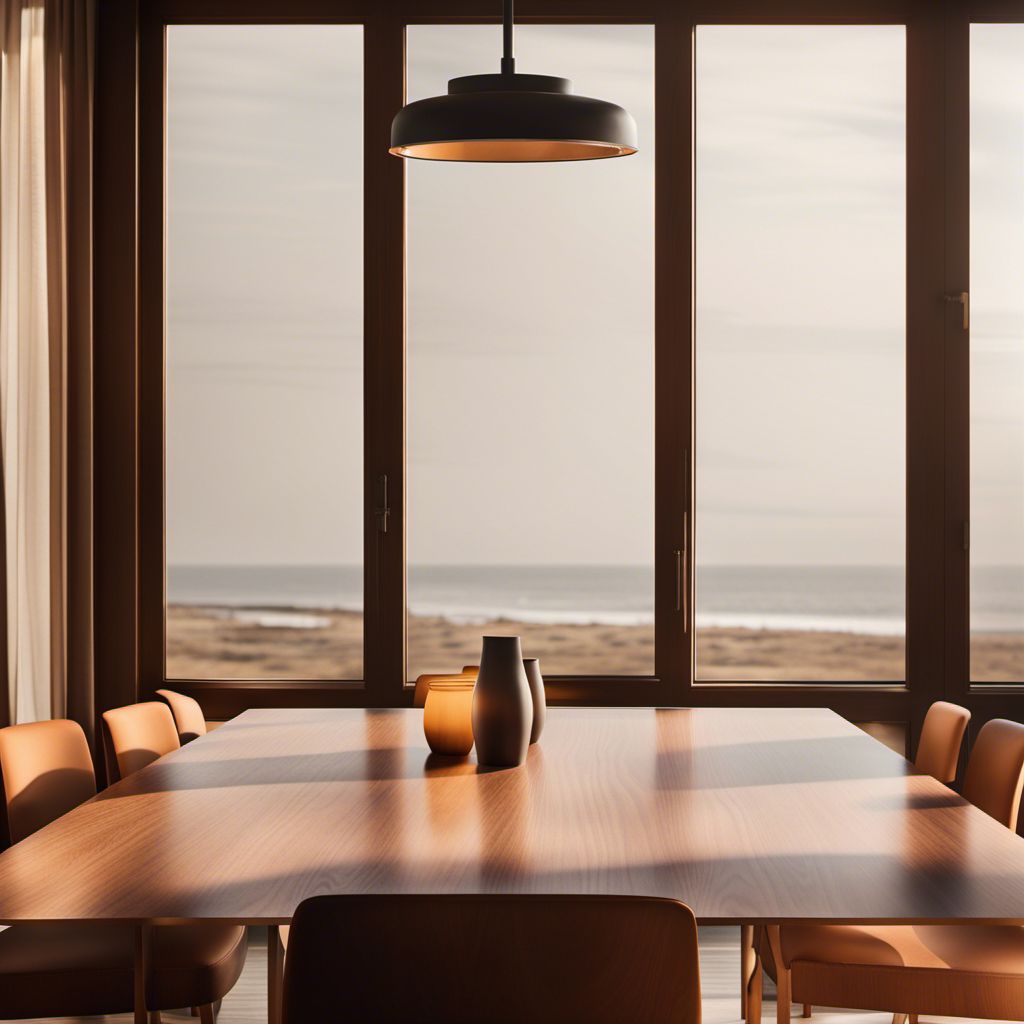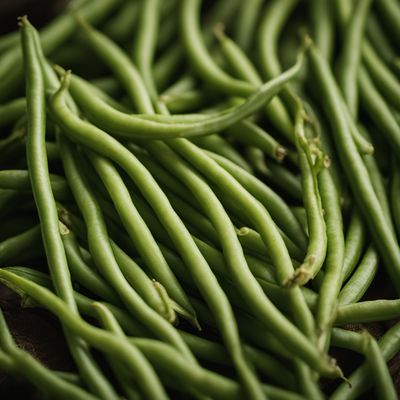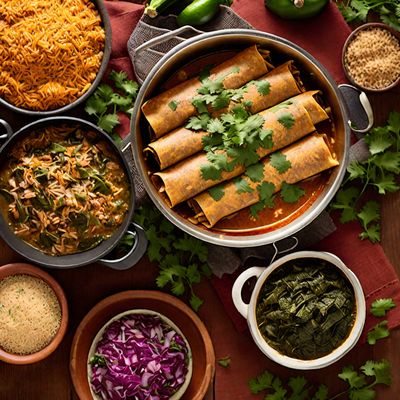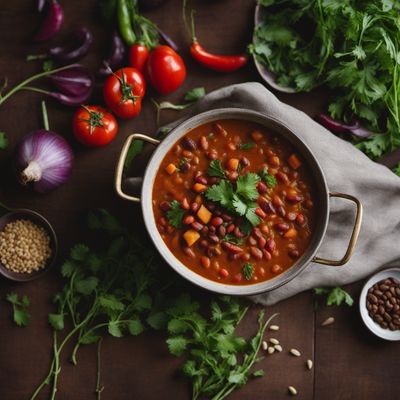
Ingredient
Black eyed peas (dry)
The Lucky Legume
Black eyed peas are small, oval-shaped legumes with a creamy white color and a black spot resembling an eye. They have a mild, nutty flavor and a soft, buttery texture when cooked. Black eyed peas are commonly used in Southern cuisine, particularly in dishes such as Hoppin' John and black eyed pea salad.
Origins and history
Black eyed peas have a rich history dating back thousands of years and are believed to have originated in Africa. They were brought to the Americas during the transatlantic slave trade and became an integral part of African American cuisine. Black eyed peas are often associated with good luck and prosperity, and they are traditionally consumed on New Year's Day in the Southern United States.
Nutritional information
Black eyed peas are a good source of plant-based protein, dietary fiber, folate, iron, and potassium. They are low in fat and cholesterol, making them a healthy addition to a balanced diet. Black eyed peas are also rich in antioxidants, which help protect against oxidative stress and inflammation.
Allergens
Black eyed peas may cause allergic reactions in individuals with legume allergies. It is advisable to exercise caution and consult a healthcare professional if you have any known allergies or sensitivities.
How to select
When selecting black eyed peas, look for dry seeds that are uniform in size, with a creamy white color and no signs of discoloration or insect damage. Avoid beans that are shriveled, moldy, or have a rancid smell. Opt for reputable brands or sources to ensure quality and freshness.
Storage recommendations
To maintain the freshness and quality of black eyed peas, store them in an airtight container in a cool, dry place. Avoid exposure to moisture, heat, or direct sunlight, as these can lead to spoilage or loss of flavor. Properly stored black eyed peas can last for up to a year.
How to produce
Black eyed peas can be grown in home gardens or small-scale farms. They require well-drained soil, ample sunlight, and regular watering. It is recommended to start with high-quality seeds and follow proper planting and care instructions for optimal growth and yield.
Preparation tips
Before cooking black eyed peas, it is advisable to soak them overnight or for at least 8 hours to soften their texture and reduce cooking time. They can be boiled, simmered, or pressure-cooked until tender. Black eyed peas are commonly used in soups, stews, salads, and side dishes. They pair well with various herbs, spices, vegetables, and meats, adding depth and creaminess to recipes.
Substitutions
Cannellini beans, navy beans, or lima beans can be used as substitutes for black eyed peas in most recipes. However, keep in mind that the flavor and texture may vary slightly.
Culinary uses
Black eyed peas are commonly used in Southern cuisine, particularly in dishes such as Hoppin' John (a traditional New Year's Day dish), black eyed pea salad, and black eyed pea fritters. They are also a popular ingredient in African, Caribbean, and Brazilian cuisines. Black eyed peas can be incorporated into casseroles, dips, spreads, and vegetarian dishes.
Availability
Black eyed peas are widely available in the United States, particularly in the Southern states. They are also cultivated and consumed in various countries in Africa, the Caribbean, and South America.
More ingredients from this category » Browse all

Monantha vetches (dry)
The Versatile Monantha Vetches

Guar beans (dry)
Versatile Legumes: Guar Beans

Lima beans (dry)
The Versatile Lima Beans

Soyabeans for consumption (dry)
The Versatile Legume

Ervils (dry)
The Nutritional Powerhouse: Exploring the Versatility of Dry Ervils

Jack beans (dry)
The Versatile Legume: Unveiling the Wonders of Jack Beans

Yardlong beans (dry)
The Nutrient-Packed Legume: Yardlong Beans

Runner beans (dry)
The Versatile Legume: Exploring the World of Dry Runner Beans

Stink beans (dry)
The Aromatic Delight: Stink Beans

Lablab beans (dry)
The Versatile Legume: Lablab Beans

Vetches (dry)
The Nutrient-Packed Legume: Dry Vetches

Rice beans (dry)
The Versatile Powerhouse: Rice Beans
Recipes using Black eyed peas (dry) » Browse all

Soulful Hot Pot
Soul-Warming Hot Pot: A Fusion of Chinese and Southern Comfort

Arrumadinho - Brazilian Black-Eyed Pea Salad
Samba Salad - A Vibrant Brazilian Delight

Soulful Enchiladas
Soulful Enchiladas: A Fusion of Mexican and Southern Flavors

Coconut-Infused Black-Eyed Peas
Exotic Coconut Delight: Uruguayan Twist on Tanzanian Mbaazi za nazi

Cameroonian-style Bean Pie
Savory Delight: Cameroonian Bean Pie with a Twist

Ewa Agoyin with Spicy Tomato Sauce
Savory Nigerian Black-eyed Peas in Spicy Tomato Sauce

Ndambé Stew
Savory Senegalese Peanut Stew

Tchaka with Smoky Grilled Chicken
Savory Delight: Tchaka with Grilled Chicken, a Taste of Benin

Huevos Rancheros
Soulful Huevos Rancheros

Banjar-style Black Eyed Peas and Rice
Savory Banjar Delight: Black Eyed Peas and Rice

Munyeta - Kenyan-Style Bean Stew
Savory Simmer: Munyeta - A Flavorful Kenyan Bean Stew

Hearty Finnish Split Pea Soup
Savory Delight: Finnish Split Pea Soup with Smoky Ham